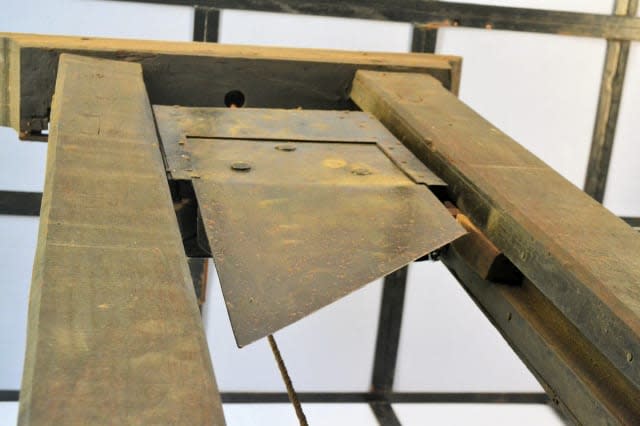Would you be a public executioner for £70,000 a year?

One of the biggest changes in the world of work over the last hundred years has been the sheer number of new jobs that have evolved.
Our children are considering careers in online marketing, app design or Zumba instruction - terms which would have meant nothing a generation or two ago.
And as these new jobs have evolved, others have fallen by the wayside. There's not much call for gas-lighters these days, for example, nor for telegraph operators.
But if these jobs did still exist, what would they pay today? Online local services marketplace Bidvine.com has worked out what salaries might be now, based on health and safety risks, inflation, the cost of living, skill, manual labour required, hours and desirability of the job.
'Black Friday queuer' is actually a job now
"It's pretty amazing to see how much the jobs market has evolved over the last 100 years. Most of these jobs have been made redundant because of technological advances and societal changes," says Sohrab Jahanbani, CEO of Bidvine.com said.
"With technology constantly advancing, it will be interesting to see what the next job to become extinct is."
The ten most highly paid extinct jobs from the past
1. Public executioner - £70,000
You might not want an executioner as your best friend - and neither did anyone else. They were shunned by society, and even seen as a bad omen. Because of this, and the fact that not many people would have wanted this job, the wage was surprisingly good. A public executioner today would be paid £70,000 a year.
2. Chimney sweep - £60,000
In the nineteenth century, adults as well as children climbed up chimneys in order to sweep them clean. The job was just as unpleasant and dangerous as you'd imagine, and because of these risks would pay around £60,000 a year today.
The UK's most miserable jobs
3. Ice cutter – £58,000
Walking on thin ice was a fundamental part of this job, which involved collecting ice from lakes and cutting it up for refrigerating food. There wasn't much in the way of safety equipment and the job was hard work, meaning it would pay around £58,000 a year today.
4. Phrenologist - £45,000
The 'science' of phrenology has long been debunked - nobody now believes you can distinguish a person's personality and mental faculties by feeling the bumps on their head. But in the nineteenth century, this was a skilled job for a medical professional, and paid the equivalent of £45,000.
5. Sword cutler - £38,000
Sword cutlers - or swordmakers - are rather less in demand these days than they once were. But it's a skilled profession, and Bidvine reckons the pay would be around £38,000 a year.
What jobs did the Kardashians do before they were famous?
6. Xylographer - £37,000
Xylography is the art of engraving on wood, and is the oldest known form of print making. Outside the world of fine art, it's an obsolete technology, but would give a salary of around £37,000 today.
7. Leech collector - £32,000
Using leeches to treat the sick has had a surprising comeback in recent years: they are used to drain blood from swollen faces and limbs after reconstructive surgery. Back in the nineteenth century, though, they were used much more widely, with bloodletting believed to cure everything from acne to piles. But leeches aren't exactly easy to catch, and finding them means spending all day wading around in bogs. To get someone to do this today, says Bidvine, you'd need to pay £32,000 a year.
8. Daguerreotypist - £31,000
Daguerreotype was the first popular form of photography, and involved a daguerreotypist polishing a sheet of silver-plated copper to a mirror finish, treating it with fumes to make its surface light sensitive, exposing it in a camera for some time and then adding mercury fumes until the image was clear on the silver. It was a specialist and artistic profession, and would bring in around £31,000 annually today, says Bidvine.
9. Resurrectionist - £30,000
The most famous resurrectionists were Burke and Hare, who dug up recently buried bodies for medical study. It wasn't exactly legal - and it certainly wasn't very pleasant, which is why Bidvine believes it would pay around £30,000 today.
10. Rat catcher - £27,000
Rat catchers still exist, but these days have a fair bit of technology to help. Once upon a time, though, the job was rather more hands on. Rat catchers were liable to get bitten regularly and often infected with diseases; the job would pay £27,000 a year today.




